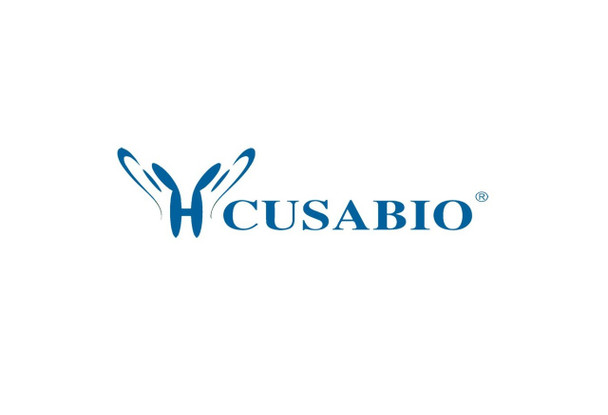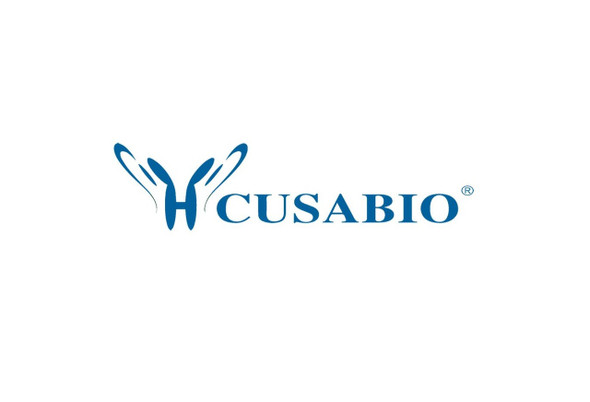Cusabio Mouse Recombinants
Recombinant Mouse Angiogenin-4 (Ang4) | CSB-EP661010MOa3
- SKU:
- CSB-EP661010MOa3
- Availability:
- 3 - 7 Working Days
Description
Recombinant Mouse Angiogenin-4 (Ang4) | CSB-EP661010MOa3 | Cusabio
Alternative Name(s): Ang4Angiogenin-4; EC 3.1.27.-
Gene Names: Ang4
Research Areas: Cardiovascular
Organism: Mus musculus (Mouse)
AA Sequence: QNERYEKFLRQHYDAKPNGRDDRYCESMMKERKLTSPCKDVNTFIHGTKKNIRAICGKKGSPYGENFRISNSPFQITTCTHSGASPRPPCGYRAFKDFRYIVIACEDGWPVHFDESFISP
Source: E.coli
Tag Info: N-terminal 6xHis-SUMO-tagged and C-terminal Myc-tagged
Expression Region: 25-144aa
Sequence Info: Full Length of Mature Protein
MW: 31.4 kDa
Purity: Greater than 85% as determined by SDS-PAGE.
Relevance: Has bactericidal activity against E.faecalis and L.monocytogenes, but not against L.innocua and E.coli. Promotes angiogenesis (in vitro). Has low ribonuclease activity (in vitro). Promotes proliferation of melanoma cells, but not of endothelial cells or fibroblasts (in vitro).
Reference: "Identification of a purine-rich intronic enhancer element in the mouse eosinophil-associated ribonuclease 2 (mEar 2) gene." Dyer K.D., Nitto T., Moreau J.M., McDevitt A.L., Rosenberg H.F. Mamm. Genome 15:126-134(2004)
Storage: The shelf life is related to many factors, storage state, buffer ingredients, storage temperature and the stability of the protein itself. Generally, the shelf life of liquid form is 6 months at -20?/-80?. The shelf life of lyophilized form is 12 months at -20?/-80?.
Notes: Repeated freezing and thawing is not recommended. Store working aliquots at 4? for up to one week.
Function: Has bactericidal activity against E.faecalis and L.monocytogenes, but not against L.innocua and E.coli. Promotes angiogenesis (in vitro). Has low ribonuclease activity (in vitro). Promotes proliferation of melanoma cells, but not of endothelial cells or fibroblasts (in vitro).
Involvement in disease:
Subcellular Location: Cytoplasmic vesicle, secretory vesicle lumen, Secreted, Nucleus, nucleolus
Protein Families: Pancreatic ribonuclease family
Tissue Specificity: Detected in small intestine, caecum and colon, with the highest expression in Paneth cells in the intestinal epithelium.
Paythway:
Form: Liquid or Lyophilized powder
Buffer: If the delivery form is liquid, the default storage buffer is Tris/PBS-based buffer, 5%-50% glycerol. If the delivery form is lyophilized powder, the buffer before lyophilization is Tris/PBS-based buffer, 6% Trehalose, pH 8.0.
Reconstitution: We recommend that this vial be briefly centrifuged prior to opening to bring the contents to the bottom. Please reconstitute protein in deionized sterile water to a concentration of 0.1-1.0 mg/mL.We recommend to add 5-50% of glycerol (final concentration) and aliquot for long-term storage at -20?/-80?. Our default final concentration of glycerol is 50%. Customers could use it as reference.
Uniprot ID: Q3TMQ6
HGNC Database Link: N/A
UniGene Database Link: UniGene
KEGG Database Link: KEGG
STRING Database Link: STRING
OMIM Database Link: N/A









